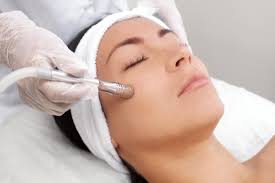
Pigmentation
Hyper-pigmentation of the skin resulting in skin discoloration occurs due to the excessive production of melanin. It may affect any area of the body and could be a source of great distress to the patients but most people get impacted with pigmentation on face. In some cases skin pigmentation could be a manifestation of an underlying medical condition and therefore each case of hyper-pigmentation should be evaluated thoroughly.
Disorder of Pigmentation
- Freckles: These are small, flat round lesions, which occur in the lighter skin types. They tend to turn darker in summer and lighter in winter. Causative factors are genetics and sun exposure.
- Solar Lentigines: These are flat pigmented 1to 3cm lesions present mainly on sun exposed areas. They start to appear in the third decade of life.
- Melasma: Is a stubborn pigmentation seen mainly in women. Occasionally, men too get affected by this condition. It is characterized by a patchy tan or brown discoloration that occurs over the upper lip, cheeks, forehead, chin and bridge of the nose. The areas affected are bilateral and frequently symmetrical.
- Post-inflammatory hyperpigmentation (PIH): This occurs following any kind of mechanical, physical, chemical trauma. An acute or chronic inflammatory process like acne, psoriasis, drugs, cosmetics, friction, too can cause PIH. Following trauma, the pigment producing cells produce excess melanin pigment as a part of the healing process.
Treatment: Various peels like glycolic and TCA help in lightening freckles. For more stubborn variety light systems like the IPL and lasers like the Q switched NdYag and KTP can be used. Minimal sun exposure, sunscreen and skin brightening and lightening cosmeceuticals will help to keep the pigment at bay.
Treatment: Everyday use of sunscreen is an absolute must. TCA peels, Intense Pulsed Light systems and lasers such as KTP and Q Switched NdYag can remove them completely.
Mild complexion problems (such as uneven pigmentation or poor skin texture).
In addition to this, superficial peels such as Glycolic acid peels and Salicylic acid peels; moderately deep peels such as 50% glycolic acid and TCA, as well as deeper peels such as Cosmelan can be used to treat melasma. Lasers such as Q switched NdYag show limited results. Light systems like the IPL, as well as Microdermabrasion, Meso therapy has also been successful in treating melasma depending upon the depth and intensity of pigment.
Once the pigmentation has cleared, a maintenance treatment with sunscreens and skin lightening products must be continued to prevent recurrences. Maintenance treatments once in two or three months are advised in stubborn cases of Melasma.
Treatment: Glycolic Acid Peels, Meso Therapy, Cosmelan Peel, Light Systems such as IPL, lasers like the Q Switched NdYag can treat PIH successfully. Minimal sun exposure is advised. Sunscreens with SPF 30 daily and skin lightening Cosmeceuticals can be used to treat PIH effectively.


